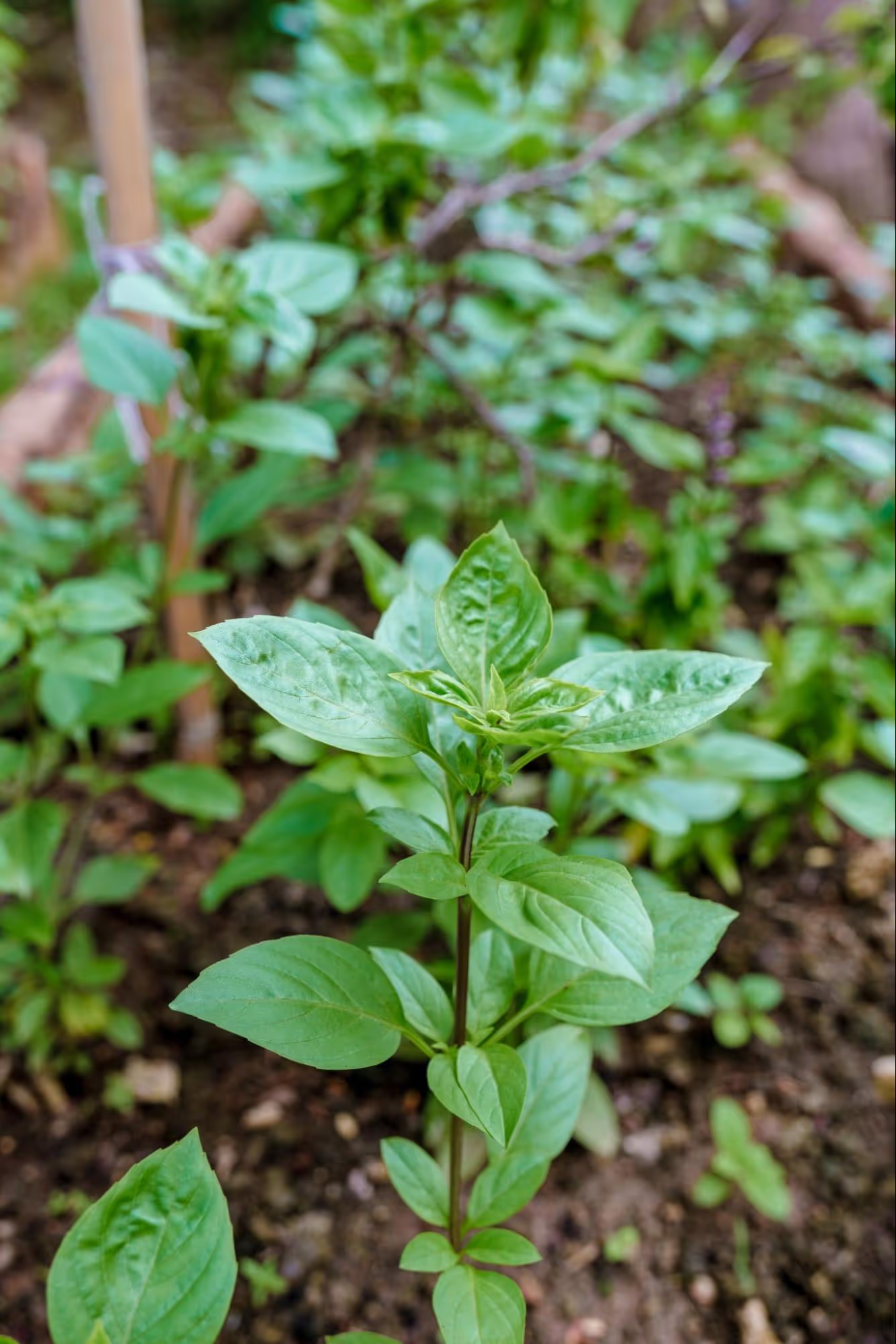
The size of Thai basil is an important factor that directly affects its growth and health. While it can reach a certain height, achieving the ideal size requires careful management of the conditions in which the plant grows. A properly shaped and compact plant will be more productive, with healthier leaves and higher yield. Maintaining the right size also contributes to its resistance to diseases and pests, making it more stable and long-lasting under various growing conditions.
The natural size and growth of Thai basil vary depending on factors such as soil type, growing conditions, and care. Typically, this plant develops to a height between 30 and 60 cm, though the ideal height can vary depending on specific conditions. It is essential for the plant to remain healthy and compact, preserving its decorative and culinary value. If Thai basil grows too tall, it may experience drooping or weaker branching, which negatively impacts the quantity of leaves that can be harvested. Additionally, a poorly shaped plant may have reduced resistance to diseases and pests, hindering its overall development. Therefore, it is necessary to invest effort in shaping the plant properly to achieve optimal growth.
Soil and Quality of the Ground
The quality of the soil where Thai basil grows directly influences its development. Rich soil containing sufficient nutrients allows the plant to grow faster. However, an excessive amount of nutrients, especially nitrogen, can result in rapid growth, leading to undesirable stem elongation and a reduction in leaf production. It is recommended to use well-drained, fertile soil that does not retain excessive moisture to achieve optimal growth.
Sunlight
Thai basil is a plant that requires plenty of sunlight for optimal growth. It thrives best in areas that receive a minimum of 6 hours of direct sunlight daily. Adequate sunlight allows the plant to grow more compact and healthy. If the plant does not receive enough light, it may become elongated, with weaker branches and more spaced-out leaves, negatively affecting its appearance and yield.
Watering and Humidity
Overwatering can cause root rot and slow down growth, while dry conditions can lead to the plant's growth being slowed. It is ideal to maintain moderate soil moisture, allowing the soil to dry out between waterings. Improper watering can result in weaker growth, causing the plant to become taller and less productive.
Temperature and Climate
Thai basil is a plant that prefers warm weather, with optimal temperatures ranging from 20 to 30°C. In cooler conditions, the plant's growth will slow, and it may become less compact and healthy. Low temperatures increase the plant’s susceptibility to diseases and hinder its overall development, so it is essential to ensure proper temperature conditions for healthy growth.
Proper Pruning and Trimming
One of the key factors for maintaining a compact size of Thai basil is regular pruning. Removing the tops and side branches encourages the growth of new shoots, making the plant denser and smaller. Pruning should be done when the plant begins to grow upwards, stimulating the formation of new branches and increasing the number of leaves. This process allows for better energy distribution within the plant, making it healthier and more productive.
Height Control and Branching
To achieve a lower plant height, it is recommended to regularly prune at around 30 cm. This process encourages lateral growth and helps the plant remain compact. If a taller plant is desired, more space should be provided, allowing it to grow upwards with minimal pruning intervention. This way, the plant can develop larger and longer stems.
Using the Right Soil
The soil in which the plant grows has a significant impact on its growth and size. For optimal development, the plant should grow in well-drained soil rich in organic matter. Using compost can significantly improve the soil quality and provide the necessary nutrients for healthy growth. Additionally, the right soil contributes to the plant's stability and its resistance to diseases.
Providing Adequate Light
Thai basil requires plenty of light to achieve optimal size and health. If the plant is growing indoors, it is important to provide sufficient light or use specialized grow lights. A lack of light can lead to an elongated, weak plant that is not compact. Timely provision of light will enable the plant to develop lush leaves and remain denser.
Achieving the ideal size for Thai basil is crucial for its healthy growth, attractive appearance, and high yield. Proper plant shaping through pruning, height control, and ensuring adequate growing conditions, such as the right soil, sunlight, and temperature, ensures the plant remains compact, healthy, and productive. Properly managing all factors influencing Thai basil's growth contributes to its resistance to diseases and pests, as well as preserving its decorative and culinary value. Maintaining the optimal size is not just a matter of aesthetics but also of the plant's long-term productivity.